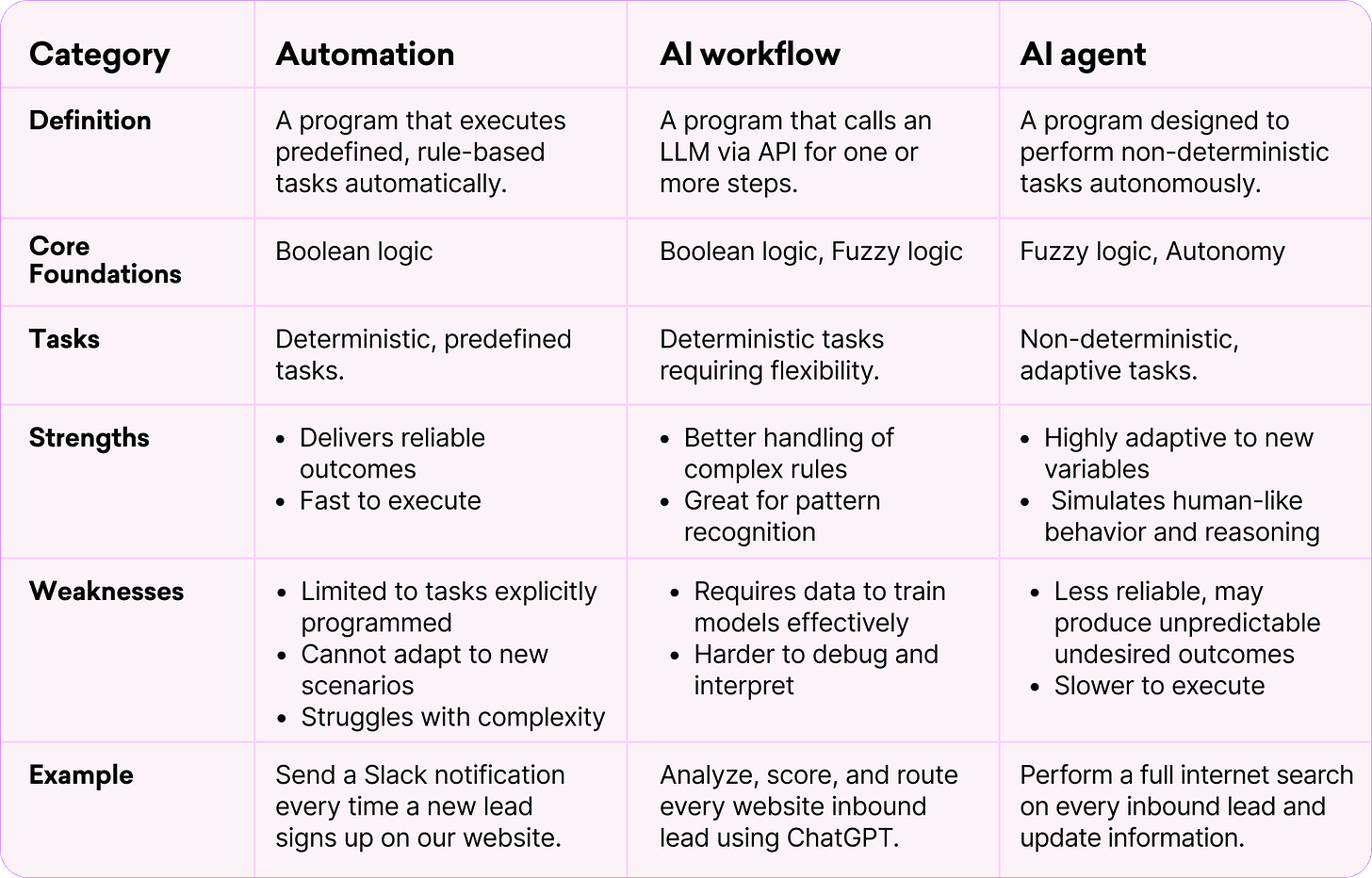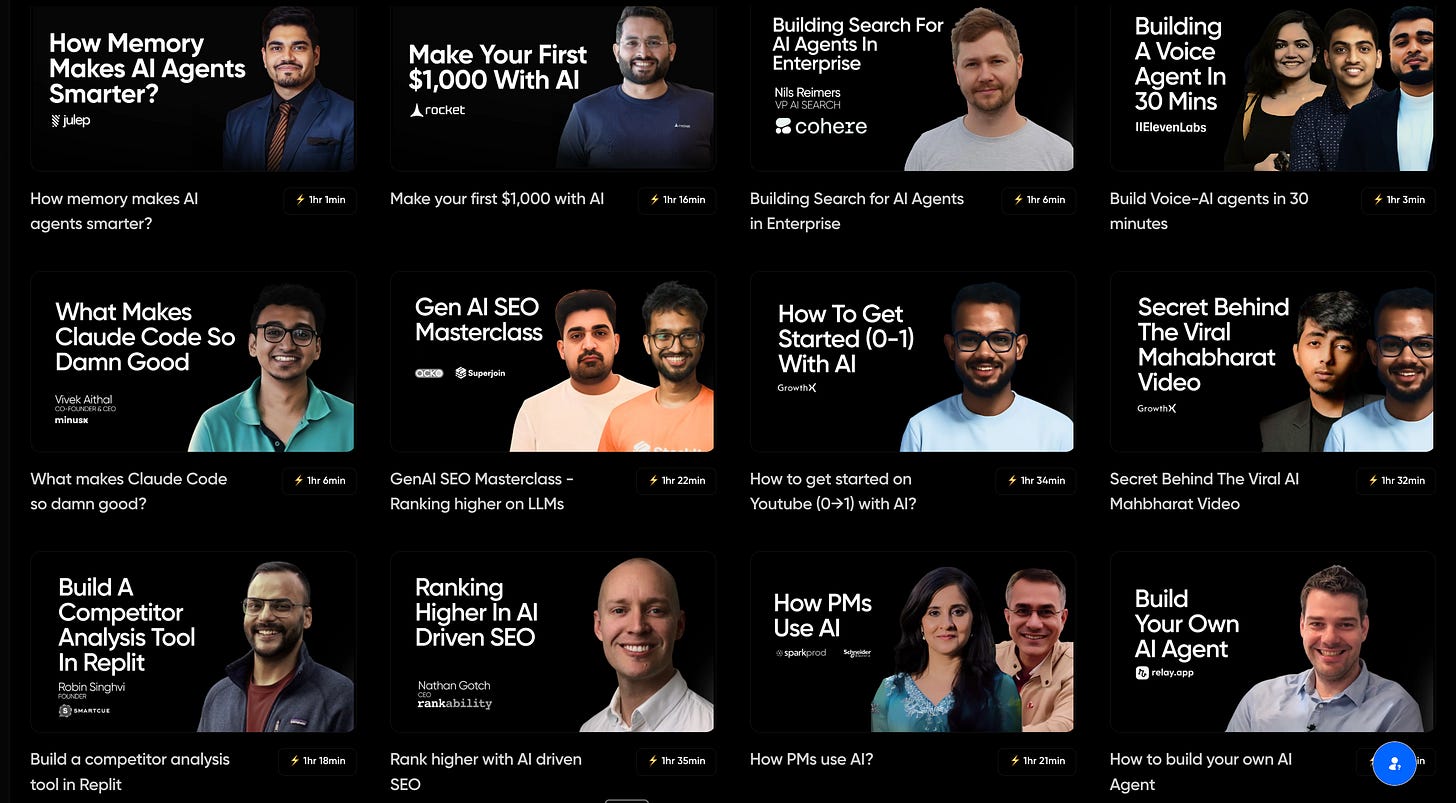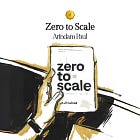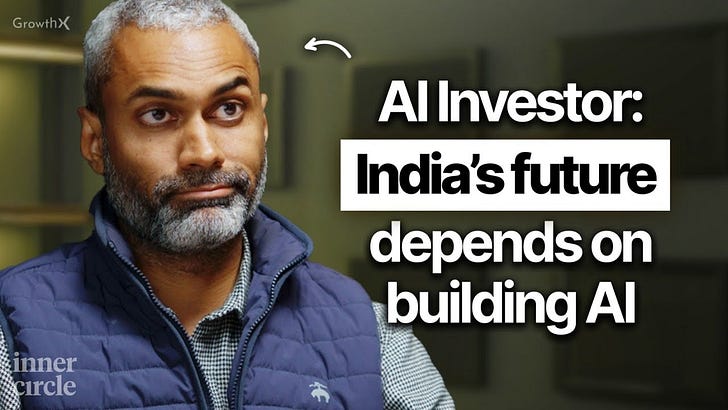How to really use AI at work?
No B.S. advice for marketers, pms & generalists.
Before we begin.
Udayan (CEO & Co-founder of GrowthX), along with a stellar lineup of top founders, is speaking at Evolve this Tuesday, 28th October in Bengaluru. If you are in founder, product or marketing leader, trying to get a grasp on where top leaders are in their AI implementation journey - this is the event for you to attend. Plus, you get access to live workshops. The event is in collaboration with Meta India & access is reserved.
Today’s edition.
Top leaders at global companies aren’t using AI like us. They’re not rewriting corporate emails or drafting summaries. They’re outsourcing entire jobs to the bots. No one really taught us that.
So, we spoke to ~4,500 professionals in our private community. People who work at companies like Sarvam, Lovable, Google, Meta and even legacy ones like Coca-Cola & HUL. We tried understanding one thing: How do they use AI? And what skills really matter? Today’s edition is a compilation of their answers in an 8-minute read.
We are going to cover 4 key roles of
generalists. product managers. marketers — in that order.
The generalists.
As a generalist, whether you’re managing operations or people, all roads lead to creating and executing efficient business processes. A few skills matter here —
Thinking in systems
It’s knowing what not to automate. It’s deciding whether a job even needs automation, and, if so, how it’ll affect team morale, workloads, and the flow of information. Systems thinking also forces you to think through feedback loops and failure points: what happens when the automation breaks, and how the system learns from it. That’s what makes it so valuable: systems thinking doesn’t just fix efficiency problems; it builds adaptable, scalable solutions that actually help teams.Building AI workflows and agents
Once you know you need an automation, can you build it out yourself? That’s a high-demand skill now. But, don’t take our word for it. Y Combinator is bullush that there is going to be massive demand for people & companies who can do this for the world. For Starters, look at this chart for me. Can you build workflows and agents?
Make, a tool for building AI agents & a competitor of Zapier, defines automations vs agents vs workflows. Those two look similar, but there’s a key difference. A workflow requires rules for every step, whereas an agent only needs context to generate them.
So, if you had to automate invoicing, a workflow could use AI to understand the query and then need rules to check whether vendor payments are on time and whether invoices are sent on time. Then, the invoice would get escalated to the CFO.
Whereas an agent would need context to solve the same problem. What does a typical invoice look like? Are there past receipts? What is the historical vendor behaviour? Do we have any internal policies? ERP and accounting system access? Then, when an invoice enters, the AI will decide whether to approve it based on all the above context, with zero human intervention.
AI adoption strategy
Can you get people to use AI systems? It’s tricky because people either don’t trust AI or worry that it will take their jobs. No in-between. Plus, leadership wants company-wide adoption, fast.
That makes your job two-fold.
Creating content/ courses, workshops, or hands-on sessions to help employees use them, while ensuring they remain in control and doing so against a ticking clock.
One more reason to upskill now: Companies are expected to spend up to $1.5 trillion on AI in 2025. And as long as companies integrate AI into their workflows, they will need adoption strategy experts. Move fast, my friend.
The product managers.
The question we tried finding the answer to was “ Assume AI is both a Product Manager Assistant & a soundboard for CXOs — what does that mean for Product Manager Skills? What do they focus on? What will be valuable now?” — loaded question, I know.
1. AI product strategy.
Great PMs know where AI actually fits — which problems it should solve, which metrics it will move, and which parts of it should be built from scratch. For example, imagine you work on a SaaS product. Customer churn is 8%. Support tickets take 6 hours to resolve. Activation rate is 40%. Which problem does AI solve best?
A rookie PM says, “Let’s build an AI chatbot for support.” Cause that’s easy work & everyone else is doing it.
A great PM says, “Our data shows users churn because they don’t activate within 7 days. An AI onboarding assistant will cut churn by 3 points. That’s worth $2 million annually. A support chatbot saves 2 lakh. We’re building onboarding first.” It’s all about the why behind a product, tied to a more important business metric.
2. AI prototyping.
Now, AI lets you build working prototypes in under an hour. Not wireframes, but functional software. More reason to upskill: Kill bad ideas 10 times faster, and sell good ones to engineers & the C-suite with proof, not slides.
Building the bridge with engineering (not new, but more important).
Engineers don’t build product features in a vacuum. Engineers rely on product managers to talk to customers, gather user feedback, and align with leadership expectations. All the stuff that defines the “why” behind the feature. They then turn that intent into the “how”: designing data pipelines, fine-tuning models, and ensuring the system scales.
So, when engineers are upskilling to build AI capabilities, PMs must do the same to provide the proper context. So here are a few engineering plus product manager skills that will matter now.Context engineering.
If you’re using an AI agent to automate a set of tasks, it will need a system to figure out things reliably. Context engineering provides this system.
For example, when you’re setting up an AI sales tool for your enterprise, you’ll enter this data. What is the typical win rate? Who is your ICP? What kind of problems do customers regularly surface? Having this context will help the AI give better answers.
So when we say context engineering from a PM point of view, we mean designing the context flow, or figuring out what information the AI needs at each step. And engineering will need to upskill on building the retrieval pipeline (how to feed the information to the tool), manage token limits, and handle failures — for starters.RAG (Retrieval Augmented Generation)
Only feeding historical context to an agent isn’t enough. To be super-effective, they need a layer of ‘right now data’. For example, if Swiggy had an AI chatbot, it would need to know which outlets are open and what the most up-to-date menu is. For that, Swiggy would use RAG.
And if that argument hasn’t convinced you to get into RAG, here’s another one. The global RAG market size is ~$1.24 B. In other words, more companies are spending money on building RAG models. Meaning — upskill in RAG. Skills for PMs: Defining what, when, and why context is provided. Skills for Engineers: Building and maintaining retrieval and generation infrastructure.Building agents
Microsoft says 87% of Fortune 500 companies will deploy AI agents by 2026. And we believe that many, many more will build successful businesses out of them.
Anything that can be automated will have an agent in the future. Paperwork? An agent will do that for you. Running your marketing ops? An agent for that, too. Search? Comet or Atlas will handle that.
Here’s what that will need — Skills for PMs: Designing the workflow and figuring out which tools the agent accesses, which approvals are needed, what the failure paths are, and so on. Skills for Engineers: Building integrations, managing middle states, implementing guardrails, to name a few.AI evaluations.
Customers expect software to work well every single time. But maintaining that standard is harder for AI tools. Why? Hallucinations, limited tokens and more issues. So, AI evaluators become all the more important — they regularly check whether the tool is working well.
Now, the role of AI evaluators may differ from company to company. But if you’re a PM or engineer, here’s what you need to know for an AI-evaluator role.
Skills for PMs: Developing evaluation strategy: defining success, running experiments, interpreting insights & checking alignment with product strategy.
Skills for engineers: Validation and optimisation pipelines: creating evaluation tests, debugging failures, assessing AI agent workflows, prompt engineering, and more
The marketers.
AI has completely reshaped the ballgame on content, marketing channels & even product positioning. The bar for marketers is higher than ever. So what skills actually matter now?
Ask Engine Optimisation.
One survey showed that 55% of people use AI instead of search engines for every task. Even the mundane stuff like: ‘Find restaurants near me’. Studies also show ChatGPT users are more engaged than Google search users.
That means SEO doesn’t matter as much as it used to. Instead, showing up in AI search engines (the ChatGPTs, Perplexities, Atlas, and Comets of the world) matters. And figuring out how matters more. That’s Ask Engine Optimisation, a core marketer’s skill for 2026.AI Generation (Ads and content).
Ever had to balance working with your company and marketing agency to create ads/content? You know how taxing it can get. Multiple rounds of briefings, feedback and iterations, all to develop ads you don’t like a lot.
Thanks to models like DALL-E 3, Synthesia, and HeyGen, you don’t need to worry about creatives any more as long as you have a concept. Making the ads takes just minutes with prompts. Meaning more time for iterations and testing, all on the exact timelines and budget.
Take a look at GrowthX YouTube channel — our shorts are more or less AI + Human in the loop. Prompt engineering matters here. It could be the difference between a convincing ad and slop.AI-led performance marketing.
Along with helping you 10X your creativity, AI can take over a lot of the gruntwork. Think adjusting bids, shifting audience targeting, and rotating creatives, all in real-time, based on performance data. In fact, AI is perfect for these tasks.
Because it relies on patterns, it works extremely well when it has high volumes of data and has to make repeatable decisions. Sounds like performance marketing, much? With AI, one marketer can now do the work of an entire performance team.
Even a small gain, say, a 3% optimisation on a monthly spend of ₹1 crore, compounds fast. That’s ₹36 lakh saved (or earned) over a year, just by letting AI handle what humans used to.
Which begs the question — where to begin?
Over the past few months, we’ve put together several deep dives (90-minute live sessions) for each core business function, featuring mentors from companies that have implemented stuff.
If you liked this edition, you’ll love this —
See you next week.









Brilliant. Wheres the 'what not to automate' for them?